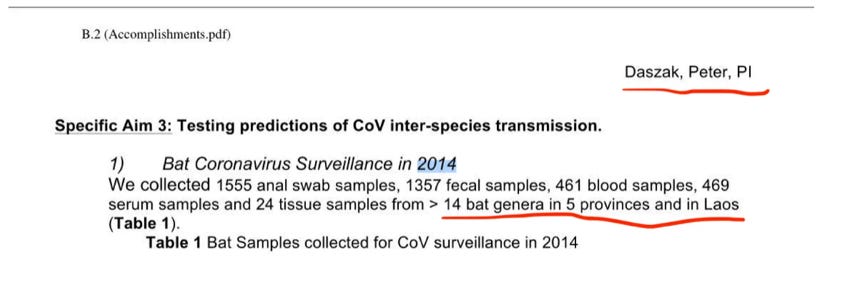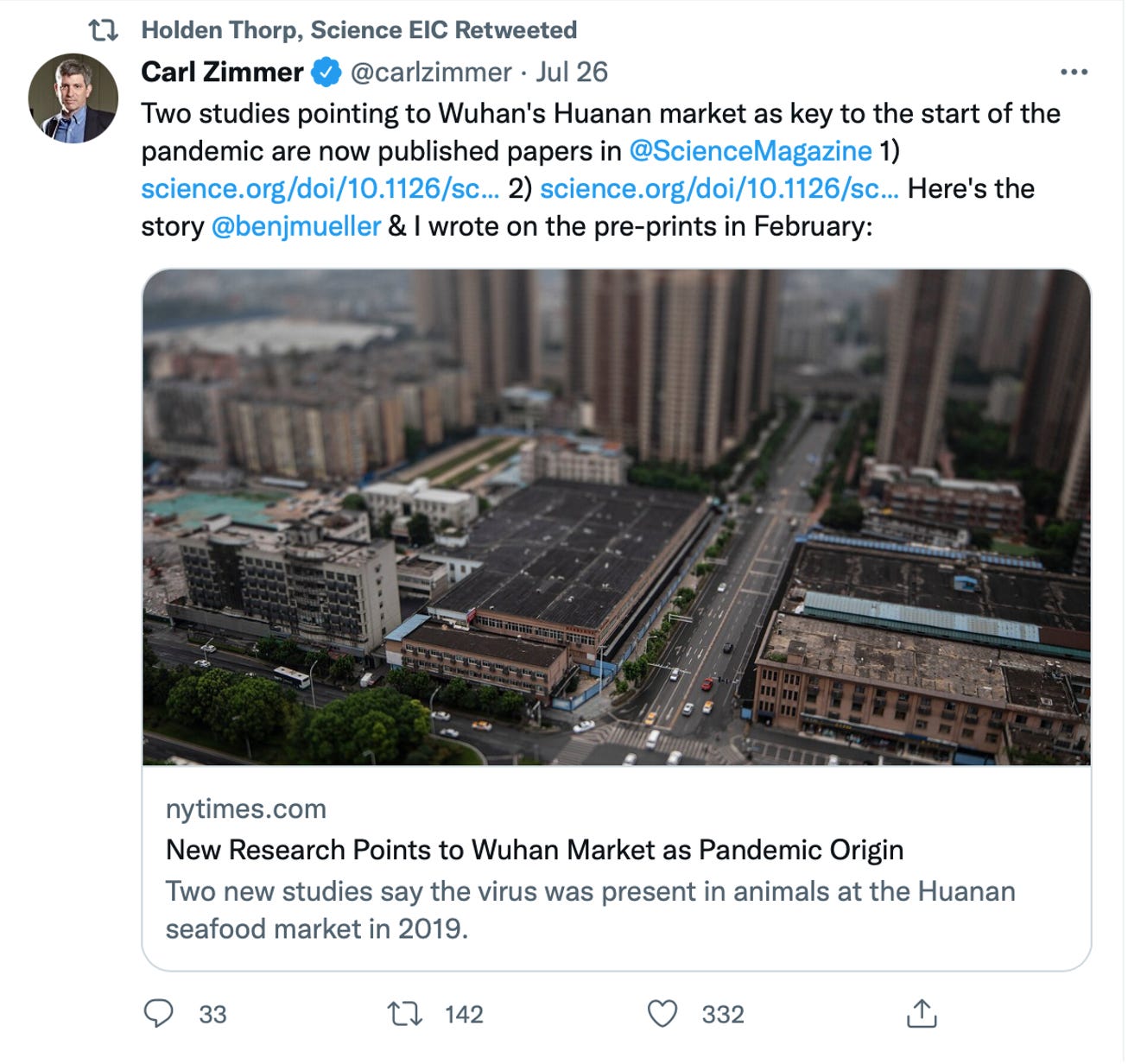5 minute read
A silly preprint uploaded a few weeks back underlined how scientists and scicomm writers easily fall for “research” that tickles them in their political privates. With an authoritative title, “The Efficacy of Facemasks in the Prevention of COVID-19: A Systematic Review,” a preprint found that only 7% of mask wearers got COVID, while 52% of those without masks did.
The preprint, which had not been examined by outside experts, proved too delicious for those promoting masks, such as science writer Maggie Fox, and quickly took off on social media.
A week later, science writer Laurie Garrett stumbled across the preprint and gave it signal boost to her followers.
And then … reality.
After the preprint had been heavily circulated on social media, British Pediatrician Alasdair Munro knocked apart this house of cards noting that the manuscript failed to provide even a basic level of scientific credibility and may even have been a hoax. Some of the numbers referenced in the tables did not appear in the text, and one of the studies that was supposedly about mask use and COVID-19 was published back in 2004.
None of these are high level, expert errors. These are the fundamentals. Anyone who claims to understand systematic reviews on any level should immediately be able to see that it falls short of the most basic scientific standards.
Without naming anyone, Dr. Alasdair noted that the study was widely shared on Twitter by the following:
An ex-director of the World Health Organisation (90,000 Twitter followers)
A professorial member of a U.K. based scientific political activist group (200,000 followers)
A Pulitzer prize winning science journalist (260,000 followers)
Health minister for a large western European country (1,000,000 followers).
Alasadair Munro concluded the obvious: either these people do not know how to appraise systematic reviews, or they shared the preprint without reading, because it flattered their ideological preconceptions.
Lab leak = Naughty narrative
After figuring out how to address the pandemic, the most important question is how the pandemic started. Once again, preprints have been critical for scicomm writers seeking evidence that direct the public’s gaze away from a possible lab leak in Wuhan, China.
As I previously pointed out, science writers at Nature, Science Magazine, and the New York Times science desk hopped all over a preprint released last September that argued the virus most closely related to COVID-19 was found in Laos, far, far away from Wuhan, China
There was only one slight problem with this framing, however. Wuhan Institute of Virology collaborator, Peter Daszak, had reported many years prior that he was sampling bat viruses in Laos. Daszak disclosed this information in a 2015 grant update to the National Institutes of Health.
And researchers at the Wuhan Institute of Virology published a paper on bat coronaviruses last July and disclosed they had been collecting bat coronaviruses from Laos going back to 2006!
So available evidence tells us that researchers at the Wuhan Institute of Virology have been studying coronaviruses from Laos for many, many years. And one of these viruses they were studying could be the COVID-19 virus.
These documents and this study were available to science writers at Nature, Science Magazine, and the New York Times, but they chose to ignore this evidence, because they had a narrative to promote. And a preprint granted them license to market a phony idea that the COVID-19 virus came from Laos, and not from research in Wuhan.
Trust Chinese research! (only when interpreted by Westerners)
The same thing happened last February when three preprints were published: a Chinese preprint concluded that a market in Wuhan was either the pandemic’s origin or a spreading event where someone outside the market brought it in. In two other preprints, Western scientists stated more unequivocally that the same evidence showed the pandemic began in the market from an infected animal.
To make things perfectly clear, all three preprints—the one by Chinese researchers, and the two by Western scientists—rely on data collected by Chinese officials. Yet the New York Times and other media outlets mostly ignored the Chinese researchers’ conclusions and promoted the views of the Western scientists.
Something similar happened a few months later, when Science Magazine published the two preprints by Western scientists, but not the preprint by the Chinese scientists. To help promote the two Western studies, the New York Times’ Carl Zimmer tweeted the new publications and was then retweeted by Science Magazine’s editor-in-chief Holden Thorp.
But this left an outstanding question: what happened to that Chinese preprint that did NOT conclude the pandemic started in a market? Rushing to fill in this gap, Science Magazine’s Jon Cohen provided a ready answer just last week: a great deal of Chinese research is now “bullshit!” and this apparently includes the Chinese preprint.
Does this dismissal extend to the two preprints by Western virologists that also relied on Chinese science … the two preprints that Science Magazine just published, that also relied on Chinese research?
Well, that’s something that Science Magazine is still not prepared to answer.
Note to Readers: In an essay published yesterday, UC-Irvine professor Andrew Noymer noted several questions that remained unanswered about how the pandemic started—questions that science writers seem uninterested in asking.
You can read that essay here: “Four things I want to know about the origin of COVID.”














Awesome article.
The nonsense has been thick, but often focused at the meta top of the evidentiary chain.
https://roundingtheearth.substack.com/p/the-meta-analytical-fixers-an-ivermectin
this article offers a profound insight. and it makes me wonder how much of every pundit's Twitter account is bullshit